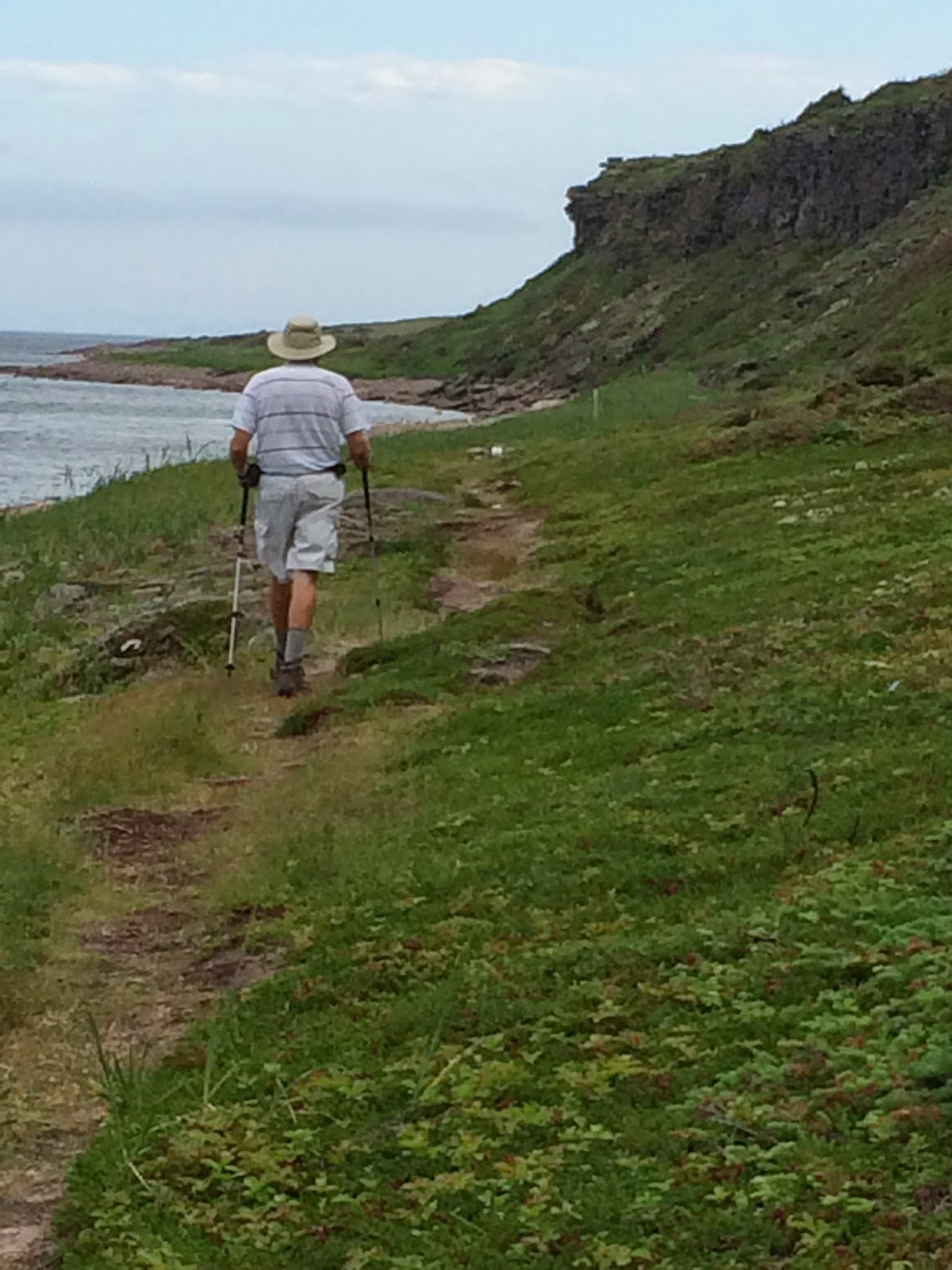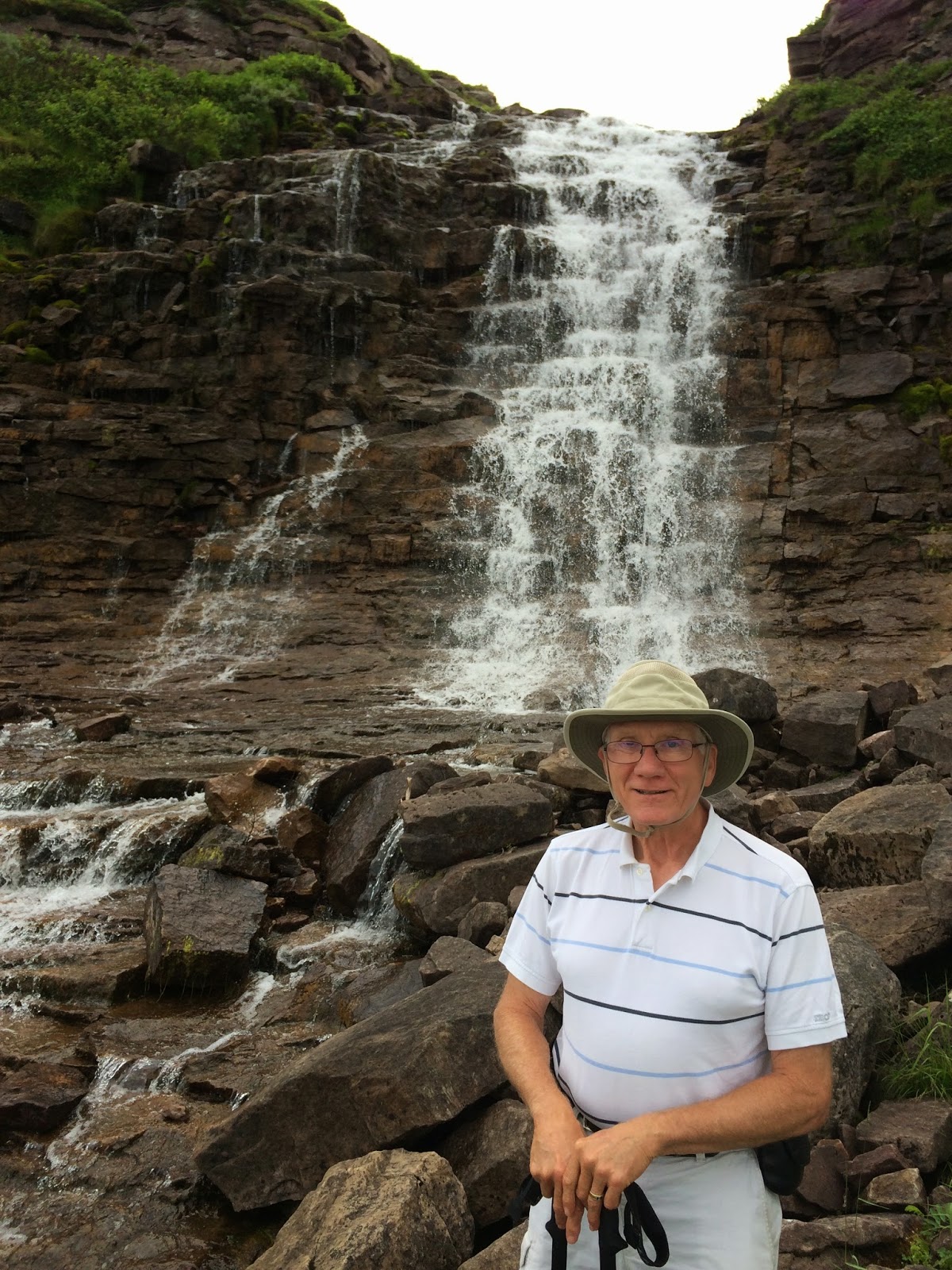We just missed the UNESCO plaque unveiling and flag raising Ceremony, on July23, 2014, at the Red Bay Basque Whaling Station. This is a big deal, to have this designation. It's the same one the Viking site at Lans aux Meadows has. What is so special about Red Bay, Labrador? According to the program for the ceremony on July 23, --
Red Bay Basque Whaling Station, established by Basque mariners in the 16th century, provides the earliest, most complete and best preserved testimony of the European whaling tradition. It became a major source of whale oil which was shipped to Europe where it was used for lighting. The site includes remains of rendering ovens, cooperages, wharves, temporary living quarters and a cemetery, together with underwater remains of vessels and whale bone deposits.
Red Bay Basque Whaling Station was inscribed on the UNESCO World Heritage List in 2013. Sites inscribed on this list have outstanding universal value and deserve protection for the benefit of all humanity. Red Bay ranks among the major archaeological properties of the world.
We spent about four hours today, visiting this site. The Basque carried on a large-scale whale fishery in the Strait of Belle Isle during the 16th and 17th centuries. They established at least 16 shore stations along the south coast of Labrador and Quebec's lower north shore. Red Bay became one of the largest and most used of these stations because of its deep water and sheltered harbor.
Commercial whaling was not a new industry to the Basques. They invented it. From the 12th - 15th centuries, the Basques hunted whales in the Bay of Biscay. By the 16th century, when the resource started to dwindle in their near-by traditional grounds, they turned their attention overseas. Like other Europeans at the time, the Basques were engaged in a seasonal cod fishery off the east coast of Canada. The fishers would have brought home the knowledge that whales were plentiful in this region.
As early as the 1540's, whaling expeditions organized by Basque merchants and mariners were traveling to the Strait of Belle Isle. At the peak of the Basque whaling period, as many as 50 ships, each with a crew of 50 -70 men, would cross the ocean each spring in pursuit of the large numbers of the bowhead and North Atlantic right whales. These whales were easy to approach because they were slow moving and swam close to shore. Most importantly, they had large amounts of blubber, which produced more oil and caused them to float after they were killed. In short, they were the "right" whales to hunt.
Each seasonal expedition lasted approximately eight months. Over this period of time, the whalers would hunt the whales, render the blubber into oil, and assemble the wooden barrels needed to bring the commodity home to European markets. It was a profitable business that brought them back each year until the early 1600's when, for a number of reasons, including the depletion of the right whale stocks in the Strait, they abandoned the Labrador coast. At this point all knowledge of this activity was lost until the 1970's when archival researcher Selma Barkham studied records from the Basque region of Southern France and northern Spain which revealed that the Basques had carried on a large-scale whale fishery in Labrador.
Not knowing anything about this activity, no one knew where it took place until archaeologists discovered chipped red tiles that the Basques had brought over for the roofs of the try works on Saddle Island in Red Bay. Local residents thought they were just red rocks. Fourteen seasons of archaeological research at Red Bay have uncovered thousands of artifacts that paint a picture of the hard conditions surrounding the life and work of the 16th century Basque whalers in Canada. Try works, where the whale oil was processed, were recovered as well as the remains of cooperages with the tools and personal items used by the barrel makers. Archaeologists also discovered a cemetery containing the remains of approximately 140 whalers buried in 60 graves. In general, Red Bay's collection of well-preserved 16th century Basque artifacts is thought to be the best of it's kind in the world.
Unerwater archaeological work at Red Bay has also revealed the remains of four 16th century galleons. One of these is belied to be the San Jaun - a vessel loaded with 800 to 1,000 barrels of oil that broke its anchor in Red Bay Harbour during a storm and sank in 1565. All of this information is told in two Parks Canada Information Centers at Red Bay.
This is Truman, the skipper of the taxi boat that took us from one of the Parks Canada Visitor Centers over to Saddle Island.
Leaving the dock of the Visitor Center.
There is a 2.5 meter trail around the island that identifies the principal Basque and Aboriginal Cultural resources on Saddle Island. This is an Aboriginal Site. A small sod house which could have been occupied by Inuit people for a few years during the 19th century.
Location near a try works with the remains of the red tile roof.
Burial ground.
The trail around Saddle Island.
A restored Chalupa, the traditional Basque whaling boat, that was found buried under the San Juan in Red Bay Harbour.
A depiction of a try works with brick fire pits and cauldrons used for rendering the blubber.
A replica of a barrel that would have carried whale oil back to Europe. It is made from all natural material; no metal was used.
A mannequin with the clothing that would have been worn in the 16th century .
Implements used for whale hunting and daily living.
Clothing found at a burial site. Red sweater and blue coulotts. What we learned was that the burial sites were in a bog that had a high acidic level that would have destroyed bones but preserved clothing. In drier areas, the soil preserved the bones, but a low acidic level would have destroyed clothing.
A depiction of a cut-away of the San Juan which shows how barrels were stowed for the trip back to Europe.
A reconstruction of the San Juan.
Enough of the San Juan was found in the silt of Red Bay Harbour for the detailed building of this replica of the ship. You can't really tell from this picture, but many of the wooden pieces at the bottom of the ship are a darker color that represent the wood that was retrieved from the floor of the cove.
This is the Binnacle box from the San Juan. Binnacles were used to store navigational instruments such as the sand glass, the astrolabe and the compass. This is the earliest complete surviving example of a ship's binnacle found anywhere in the world. All the navigational instruments from the vessel in Red Bay were found among the binnacle remains.
Red Bay is the end of the line for the paved road in Labrador. We drove to the beginning of the gravel road and travelled a way on the road - just to say that we did.
The end of the paved road and the beginning of the gravel.
The gravel trans-Labrador highway.
Leaving Red Bay we travelled back to Forteau where we are staying tonight. Tomorrow we will catch the 8 am ferry back to Newfoudland.
Crossing a river on the Trans-Labrador highway. This is up-stream.
The other side of the bridge looking down stream. Notice the waterfall along the bank on the left side of the picture.
The river on its way to the ocean.
This is a fairly long bridge across the river. Notice the wood deck.
In Forteau we registered into our B & B and headed out for the Overfall Brook Trail.
Another inukchuk along the trail.
Beautiful trail along the coast.
The falls.
From the falls you can see the lighthouse at Point Amour.
A sandy beach along the trail.
Coming back we could see that it was raining in the distance which produced this rainbow. A fitting way to say good-bye to Labrador.




























I missed this somehow, what a beautiful rainbow!
ReplyDelete